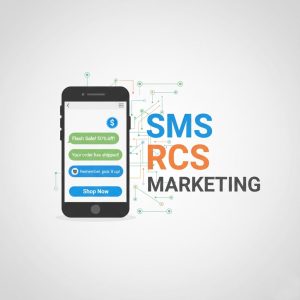How Profitable Is the Mobile App Market in 2025? A Complete Analysis

The Mobile App Economy Landscape
The mobile app market continues to be one of the most dynamic and rapidly evolving sectors in the global digital economy. As smartphones have become ubiquitous in our daily lives, the opportunities for developers and entrepreneurs to generate revenue through mobile applications have expanded exponentially. However, beneath the headline-grabbing success stories of apps like TikTok, Instagram, and mobile games generating millions in daily revenue lies a complex market reality that deserves careful analysis.
Today’s mobile app economy has matured significantly from its early gold rush days. With over 5 million apps available across the Apple App Store and Google Play Store, the competition for user attention and dollars has never been fiercer. This raises important questions for anyone considering entering this space: Just how profitable is the mobile app market in 2025? What are the realistic revenue expectations? And most importantly, what strategies actually work for monetizing mobile applications in today’s landscape?
Mobile App Market Size and Growth Projections
The global mobile app market continues to demonstrate remarkable growth despite its maturity. According to recent industry reports, the market was valued at approximately $581.9 billion in 2024 and is projected to reach $935.2 billion by 2030, growing at a compound annual growth rate (CAGR) of 8.2% during this forecast period.
This growth is driven by several factors:
- Increasing smartphone penetration: Globally, smartphone adoption continues to rise, especially in emerging markets across Asia, Africa, and Latin America.
- 5G technology rollout: The implementation of 5G networks is enabling more sophisticated mobile applications and experiences, opening new revenue opportunities.
- Evolving consumer behaviors: The COVID-19 pandemic accelerated digital adoption, with consumers spending more time and money on mobile apps for entertainment, productivity, health, and e-commerce.
- Enterprise mobile app expansion: Businesses are increasingly investing in mobile applications for internal operations and customer engagement.
- Growing in-app advertising ecosystem: Advertisers continue to shift budgets toward mobile platforms, creating monetization opportunities for app developers.
While these numbers paint an optimistic picture, it’s important to understand that revenue distribution within the mobile app economy remains highly uneven, with a relatively small percentage of applications capturing the majority of market revenue.
Revenue Distribution in the App Economy: Understanding the Reality
One of the most critical aspects of assessing the profitability of the mobile app market is understanding the stark reality of revenue distribution. The app economy demonstrates a clear “winner-takes-most” pattern that potential developers and investors must acknowledge.
According to data from App Annie’s State of Mobile report, approximately 1% of app publishers generate 93% of all app store revenue. This striking statistic illustrates the significant challenges facing new entrants to the market.
The disparity becomes even more pronounced when examining category-specific data:
- In gaming, which accounts for roughly 70% of App Store revenue, the top 100 gaming apps generate over 85% of total gaming revenue.
- Non-gaming categories show slightly less concentration but still follow similar patterns, with the top 5% of publishers capturing approximately 75% of revenue.
- The average revenue per app has decreased over time as the market becomes increasingly saturated.
As discussed on MobileDominate.com, this concentration of revenue presents both challenges and opportunities for developers. While breaking into the top tier of earners is extraordinarily difficult, understanding this landscape allows strategists to set realistic expectations and develop targeted approaches to carve out sustainable niches.
Dominant App Monetization Models: Which Generate the Most Revenue?
The mobile app market offers various monetization strategies, each with different profitability potential depending on the app category, target audience, and market positioning. Understanding these models is crucial for maximizing revenue potential.
1. Freemium and In-App Purchases
The freemium model—offering a free basic version with premium features available for purchase—dominates the mobile app landscape. This approach allows developers to attract a large user base while monetizing engaged users through in-app purchases (IAPs).
Statistics show that:
- Free apps with IAPs generate approximately 79% of Apple App Store revenue
- The average in-app purchase value ranges from $0.99 to $4.99
- Only 5-10% of users typically make in-app purchases
- Gaming apps utilizing this model show the highest conversion rates, with some successful titles converting up to 20% of users
The key to success with this model lies in balancing free content to maintain engagement while creating compelling value propositions for purchases. Apps that excel at this balance can generate substantial recurring revenue streams.
2. Subscription Models
Subscription-based monetization has seen tremendous growth, particularly for content, productivity, and service-based applications. This model provides predictable recurring revenue and higher customer lifetime value.
Notable statistics include:
- Subscription apps saw revenue growth of 21% year-over-year in 2024
- The average subscription retention rate across categories is approximately 43% after 12 months
- Premium subscriptions typically range from $2.99 to $14.99 monthly
- Successful subscription apps focus on continuous value delivery to minimize churn
Categories performing exceptionally well with subscription models include streaming services, productivity tools, health and fitness apps, and premium content platforms.
3. Advertising-Based Models
Mobile advertising remains a significant revenue source, particularly for apps with large user bases but limited direct monetization potential. Formats include banner ads, interstitial ads, rewarded videos, and native advertising.
Key metrics include:
- Average revenue per daily active user (ARPDAU) for ad-supported apps ranges from $0.01 to $0.05
- Video and rewarded ads generate 2-3 times higher eCPMs than traditional display ads
- Hyper-casual games rely almost exclusively on ad revenue, with some generating millions monthly
- Ad fatigue remains a significant challenge, with excessive advertising leading to user abandonment
Strategic implementation of non-intrusive, relevant advertising can create sustainable revenue while maintaining user satisfaction.
4. Hybrid Monetization Approaches
Many of the most financially successful apps employ hybrid monetization strategies, combining multiple revenue models to maximize earnings across different user segments.
For example:
- Offering a free, ad-supported version with a premium subscription option to remove ads
- Implementing both subscription access and additional in-app purchases
- Using tiered subscription models with progressive feature access
According to industry analysis, apps utilizing hybrid monetization approaches show 30% higher average revenue per user (ARPU) compared to single-model implementations.
Most Profitable App Categories in 2025
Profitability varies significantly across app categories, with some consistently outperforming others in terms of revenue potential. Understanding these differences is crucial for strategic planning.
1. Mobile Gaming
Gaming continues to dominate mobile app revenue, accounting for approximately 72% of all App Store spending. Within this category:
- Role-playing games (RPGs) and strategy games generate the highest average revenue per user
- Puzzle and casual games achieve the largest download volumes but lower monetization rates
- Social gaming elements significantly increase engagement and spending
- Games with competitive multiplayer components show higher retention and monetization
The gaming category benefits from established monetization practices, with users accustomed to in-app purchases for virtual goods, battle passes, and cosmetic items.
2. Health and Fitness Apps
The health and fitness category has seen remarkable growth, particularly following global health concerns:
- Premium fitness subscription apps generate average monthly revenues of $2.50-$5.00 per active user
- Retention rates for successful fitness apps exceed industry averages by 15-20%
- Specialized health tracking apps command premium price points
- Integration with wearable technology creates additional value propositions
The combination of recurring subscription revenue and high perceived value makes this a particularly profitable category for developers with relevant expertise.
3. Productivity and Business Tools
Professional and productivity apps continue to show strong monetization potential:
- Business-oriented productivity tools command subscription prices 2-3 times higher than consumer apps
- Enterprise adoption can lead to volume licensing deals and stable revenue
- Productivity apps show lower user acquisition costs than entertainment categories
- Integration with existing workflows increases stickiness and reduces churn
The growing remote work trend has further expanded opportunities in this category, particularly for specialized tools addressing specific professional needs.
4. Education and Language Learning
Educational apps have established strong monetization models:
- Language learning apps achieve some of the highest subscription conversion rates at 8-12%
- Educational platforms for children benefit from parental willingness to invest
- Professional certification and skills development apps command premium pricing
- Completion-based incentives improve retention and lifetime value
This category benefits from high perceived value and the ability to demonstrate concrete outcomes from user investment.
5. Dating and Social Apps
Dating and premium social apps continue to monetize effectively:
- Dating apps generate among the highest average revenue per user of any category
- Premium features like visibility boosts and advanced matching drive significant in-app purchases
- Subscription tiers create effective monetization ladders
- Demographic-specific dating apps command premium prices in niche markets
The emotional connection to these services drives willingness to pay, resulting in strong monetization performance.
Market Challenges and Barriers to Profitability
Despite the impressive growth and revenue opportunities, several significant challenges affect profitability in the mobile app market:
1. Increasing User Acquisition Costs
The cost of acquiring users has risen dramatically:
- Average cost per install (CPI) has increased by 45% over the past three years
- iOS privacy changes have disrupted targeted advertising capabilities
- Competition for visibility has intensified across all major categories
- Platform algorithm changes can dramatically impact organic discovery
As noted in a comprehensive analysis by AppsFlyer, these rising costs directly impact the profitability equation, particularly for newer market entrants without established user bases.
2. Platform Commission Structures
Both major app stores maintain significant commission structures:
- Standard commission rates of 15-30% on all in-app purchases and subscriptions
- Alternative payment processing restrictions limit workarounds in many markets
- Recent legal challenges have created uncertainty but limited concrete changes
- Small developer programs offer reduced rates but with significant limitations
These platform costs directly impact margins and must be factored into any profitability analysis.
3. Market Saturation and Discoverability
With millions of apps competing for attention:
- Over 60% of apps in major stores have fewer than 1,000 downloads
- Average app retention rates show that 77% of users abandon apps within three days of installation
- Search optimization and featuring opportunities are increasingly competitive
- Breaking through the noise requires significant marketing investment or exceptional viral potential
As described on MobileDominate.com, this saturation makes strategic market positioning and differentiation essential for new entrants.
4. Technical and Operational Overhead
The technical requirements for competitive apps continue to increase:
- Cross-platform development across iOS and Android doubles development complexity
- User expectations for regular updates and new features create ongoing costs
- Security, compliance, and data protection requirements add significant overhead
- Customer support needs grow proportionally with user base
These operational requirements create a higher profitability threshold that must be crossed before apps become genuinely profitable.
Strategies for Maximizing App Profitability
Given these market realities, several strategies have emerged as particularly effective for maximizing profitability:
1. Niche Market Targeting
Rather than competing in crowded mainstream categories:
- Identify underserved user segments with specific needs
- Focus on solving well-defined problems for specific demographics
- Leverage specialized knowledge to create differentiated value
- Build community and word-of-mouth within targeted communities
This approach can dramatically reduce user acquisition costs while increasing conversion rates through precise value proposition matching.
2. Retention-Focused Development
With acquisition costs rising, maximizing user lifetime value becomes essential:
- Prioritize features that increase engagement frequency and duration
- Implement personalization to increase relevance and stickiness
- Create progression systems that reward continued usage
- Develop community features that create social commitment
Studies show that improving retention by just 5% can increase profitability by 25-95% depending on the business model.
3. Optimizing Monetization Timing
Strategic timing of monetization opportunities significantly impacts conversion:
- Map the user journey to identify high-value moments for monetization offers
- Create clear value exchanges at points of highest engagement
- Implement adaptive pricing based on user behavior patterns
- Test various pricing tiers to identify optimal price points
This data-driven approach to monetization timing can increase conversion rates by 15-30% without additional development costs.
4. Strategic Partnership Development
Partnerships can create alternative revenue streams and reduce acquisition costs:
- Collaborate with complementary services for cross-promotion
- Develop integration opportunities with established platforms
- Create co-branded experiences with relevant brands
- Leverage API access as a revenue channel for enterprise customers
These relationships can create sustainable competitive advantages while diversifying revenue sources.
Conclusion: Is the Mobile App Market Truly Profitable?
The mobile app market in 2025 presents a complex picture of profitability. While the overall market continues to grow impressively, success is increasingly concentrated among established players and those with exceptional execution capabilities.
For new entrants and smaller developers, profitability requires strategic thinking, realistic expectations, and careful planning. The days of easy successes through simple app launches are firmly in the past. However, for those who approach the market strategically—identifying specific user needs, developing exceptional solutions, and executing sophisticated monetization and retention strategies—the mobile app market continues to offer significant profit potential.
The key factors for success include:
- Focused market positioning rather than broad appeals
- Exceptional user experience design that drives retention
- Sophisticated, multi-layered monetization approaches
- Data-driven optimization of all business processes
- Realistic financial planning including platform costs and marketing investments
While not every app will achieve unicorn status or generate millions in revenue, well-executed projects addressing genuine user needs can still achieve healthy profitability and growth. The mobile app market rewards excellence, innovation, and strategic execution—making it a challenging but potentially rewarding space for businesses and developers ready to commit to these principles.





